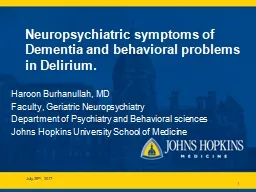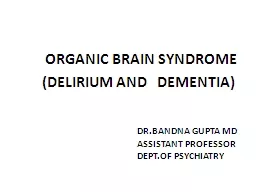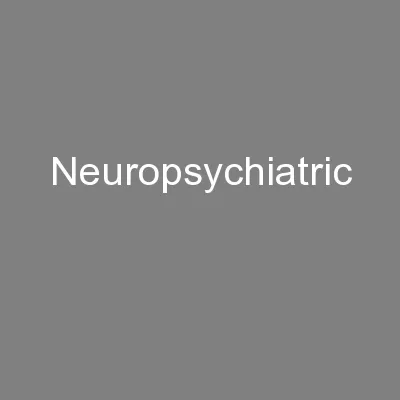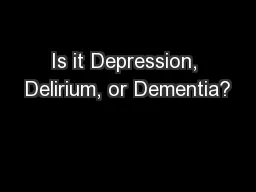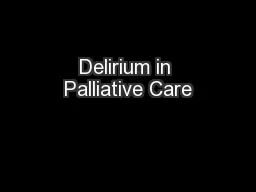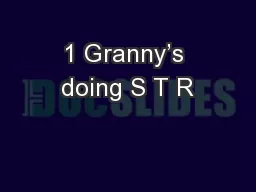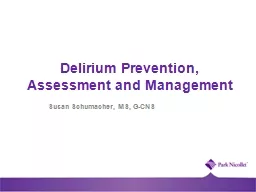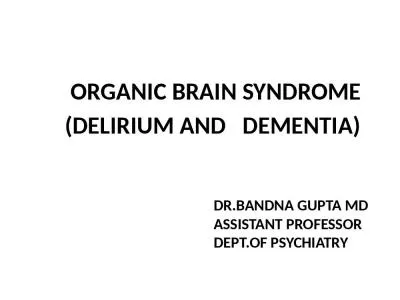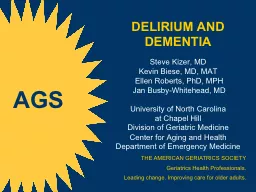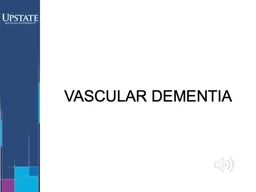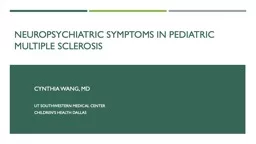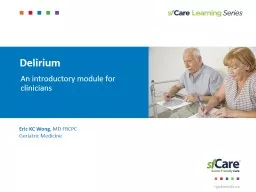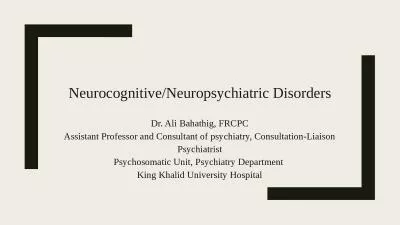PPT-Neuropsychiatric symptoms of Dementia and behavioral problems in Delirium.
Author : trish-goza | Published Date : 2020-01-26
Neuropsychiatric symptoms of Dementia and behavioral problems in Delirium Haroon Burhanullah MD Faculty Geriatric Neuropsychiatry Department of Psychiatry and Behavioral
Presentation Embed Code
Download Presentation
Download Presentation The PPT/PDF document "Neuropsychiatric symptoms of Dementia an..." is the property of its rightful owner. Permission is granted to download and print the materials on this website for personal, non-commercial use only, and to display it on your personal computer provided you do not modify the materials and that you retain all copyright notices contained in the materials. By downloading content from our website, you accept the terms of this agreement.
Neuropsychiatric symptoms of Dementia and behavioral problems in Delirium.: Transcript
Download Rules Of Document
"Neuropsychiatric symptoms of Dementia and behavioral problems in Delirium."The content belongs to its owner. You may download and print it for personal use, without modification, and keep all copyright notices. By downloading, you agree to these terms.
Related Documents

